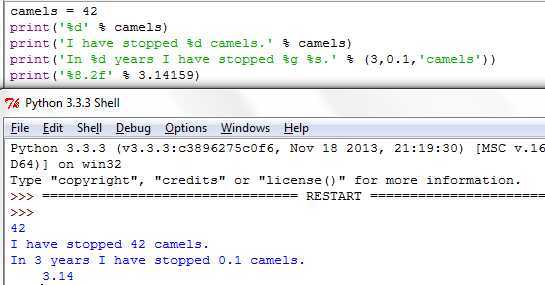标签:style blog http io ar for 2014 sp art
The argument of write has to be a string, so if we want to put other values in a file, we have to convert them to strings. The easiest way to do that is with str. An alternative is to use the format operator, %. When applied to integers, % is the modulus operator. But when the first operand is a string, % is the format operator. The first operand is the format string, and the second operand is a tuple of expressions. The result is a string that contains the values of the expressions, formatted according to the format string.
Examples:

The format sequence ‘%g’ formats the next element in the tuple as a floating-point number, and ‘%s’ formats the next item as a string. By default, the floating-point format prints six decimal places. You can specify the number of digits as part of the format sequence. For example, the sequence ‘%8.2f’ formats a floating-point number to be 8 characters long, with 2 digits after the decimal point. The result takes up eight spaces with two digits after the decimal point.
from Thinking in Python
标签:style blog http io ar for 2014 sp art
原文地址:http://www.cnblogs.com/ryansunyu/p/3988041.html